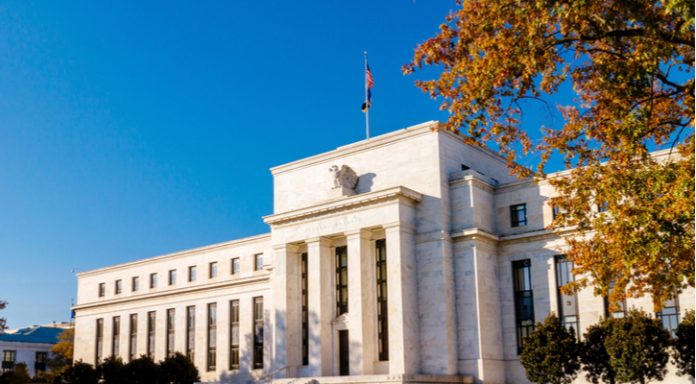The pound finished the previous session flat versus the dollar at US $1.3966, after hitting an earlier high of US$1.4070. Monday was light on economic data for the pound, leaving politics to drive trading, whilst market participants look ahead to Fed Powell’s first appearance.
| What do these figures mean? |
|---|
|
When measuring the value of a pair of currencies, one set equals 1 unit and the other shows the current equivalent. As the market moves, the amount will vary from minute to minute. For example, it could be written: 1 GBP = 1.28934 USD Here, £1 is equivalent to approximately $1.29. This specifically measures the pound’s worth against the dollar. If the US dollar amount increases in this pairing, it’s positive for the pound. Or, if you were looking at it the other way around: 1 USD = 0.77786 GBP In this example, $1 is equivalent to approximately £0.78. This measures the US dollar’s worth versus the British pound. If the sterling number gets larger, it’s good news for the dollar. |
The pound started the day higher after comments by Bank of England (BoE) Deputy Governor Dave Ramsden in favour of a Spring interest rate rise. Ramsden, who was one of the two dissenters in November, voting against a rate rise, has changed his stance and now is openly in favour of hiking sooner. This boosted the markets hopes of an interest rate rise possibly as soon as May, which kept the pound strong.
| Why do raised interest rates boost a currency’s value? |
|---|
| Interest rates are key to understanding exchange rate movements. Those who have large sums of money to invest want the highest return on their investments. Higher interest rate environments tend to offer higher yields. So, if the interest rate or at least the interest rate expectation of a country is relatively higher compared to another, then it attracts more foreign capital investment. Large corporations and investors need local currency to invest. More local currency used then boosts the demand of that currency, pushing the value higher. |
Political developments then sent the pound lower after pro-Remain Tory rebels said that they would vote against the UK Prime Minister Theresa May and in favour of Labour. This came after UK opposition (Labour) leader Jeremy Corbyn unveiled his support to remain in the customs union post Brexit. This is an embarrassment for Theresa May as she struggles to keep her party united, ahead of critical meetings in Brussels. Should the Tory rebels vote cross party with Labour, this could throw Theresa May’s hold on power into turmoil.
| How does political risk have impact on a currency? |
|---|
| Political risk drags on the confidence of consumers and businesses alike, which means both corporations and regular households are then less inclined to spend money. The drop in spending, in turn, slows the economy. Foreign investors prefer to invest their money in politically stable countries as well as those with strong economies. Signs that a country is politically or economically less stable will result in foreign investors pulling their money out of the country. This means selling out of the local currency, which then increases its supply and, in turn, devalues the money. |
Today there is no high impacting UK economic data, meaning that politics and Brexit headlines will continue to drive direction in the pound.
Dollar lower on weak housing data
The dollar fell out of favour late in the previous session, after economic data disappointed market participants. Sales of newly constructed homes dropped unexpectedly at the beginning of this year. January’s selling price was 7.8% lower than the month earlier. This figure can be important to currency traders at it paints a picture of the health of the economy. Consumers snap up houses and demand is strong when consumer confidence is high. The dollar weakened on the back of the softer data; however, one weak data print doesn’t make a trend. Furthermore, January tends to be a difficult month due to seasonal lack of activity.
Today investors will be looking firmly towards new Federal Reserve Chair Jerome Powell as he testifies before Congress. Added to this economic data, including US inflation figures could create volatility for the dollar.
|
This article was initially published on TransferWise.com from the same author. The content at Currency Live is the sole opinion of the authors and in no way reflects the views of TransferWise Inc. |





